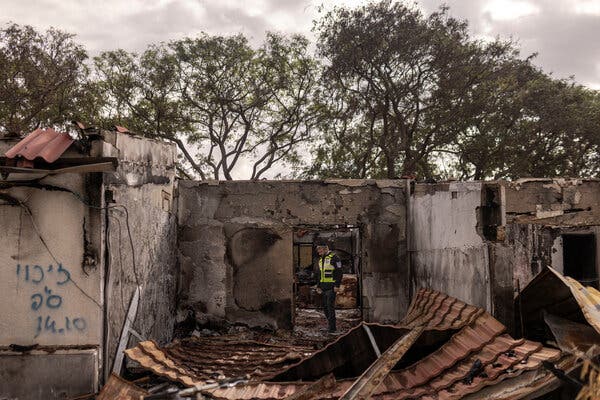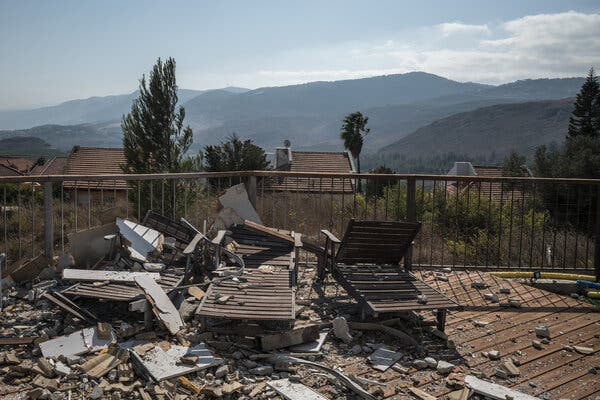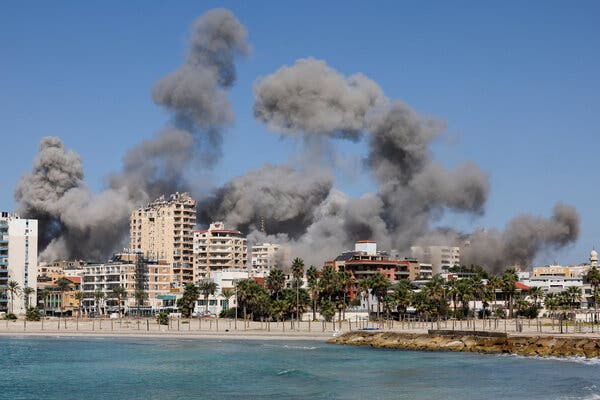The Times reviewed the minutes of 10 meetings among Hamas’s top leaders. The records show the militant group avoided several escalations since 2021 to falsely imply it had been deterred — while seeking Iranian support for a major attack.

For more than two years, Yahya Sinwar huddled with his top Hamas commanders and plotted what they hoped would be the most devastating and destabilizing attack on Israel in the militant group’s four-decade history.
Minutes of Hamas’s secret meetings, seized by the Israeli military and obtained by The New York Times, provide a detailed record of the planning for the Oct. 7 terrorist attack, as well as Mr. Sinwar’s determination to persuade Hamas’s allies, Iran and Hezbollah, to join the assault or at least commit to a broader fight with Israel if Hamas staged a surprise cross-border raid.
The documents, which represent a breakthrough in understanding Hamas, also show extensive efforts to deceive Israel about its intentions as the group laid the groundwork for a bold assault and a regional conflagration that Mr. Sinwar hoped would cause Israel to “collapse.”
The documents consist of minutes from 10 secret planning meetings of a small group of Hamas political and military leaders in the run-up to the attack, on Oct. 7, 2023. The minutes include 30 pages of previously undisclosed details about the way Hamas’s leadership works and the preparations that went into its attack.
The documents, which were verified by The Times, lay out the main strategies and assessments of the leadership group:
-
Hamas initially planned to carry out the attack, which it code-named “the big project,” in the fall of 2022. But the group delayed executing the plan as it tried to persuade Iran and Hezbollah to participate.
-
As they prepared arguments aimed at Hezbollah, the Hamas leaders said that Israel’s “internal situation” — an apparent reference to turmoil over Prime Minister Benjamin Netanyahu’s contentious plans to overhaul the judiciary — was among the reasons they were “compelled to move toward a strategic battle.”
-
In July 2023, Hamas dispatched a top official to Lebanon, where he met with a senior Iranian commander and requested help with striking sensitive sites at the start of the assault.
-
The senior Iranian commander told Hamas that Iran and Hezbollah were supportive in principle, but needed more time to prepare; the minutes do not say how detailed a plan was presented by Hamas to its allies.
-
The documents also say that Hamas planned to discuss the attack in more detail at a subsequent meeting with Hassan Nasrallah, Hezbollah’s leader at the time, but do not clarify whether the discussion happened.
-
Hamas felt assured of its allies’ general support, but concluded it might need to go ahead without their full involvement — in part to stop Israel from deploying an advanced new air-defense system before the assault took place.
-
The decision to attack was also influenced by Hamas’s desire to disrupt efforts to normalize relations between Israel and Saudi Arabia, the entrenchment of Israel’s occupation of the West Bank and Israeli efforts to exert greater control over the Aqsa mosque compound in Jerusalem, sacred in both Islam and Judaism and known to Jews as the Temple Mount.
-
Hamas deliberately avoided major confrontations with Israel for two years from 2021, in order to maximize the surprise of the Oct. 7 attack. As the leaders saw it, they “must keep the enemy convinced that Hamas in Gaza wants calm.”
-
Hamas leaders in Gaza said they briefed Ismail Haniyeh, Hamas’s Qatar-based political leader, on “the big project.” It was not previously known whether Mr. Haniyeh, who was assassinated by Israel in July, had been briefed on the attack before it happened.
Prelude to War
The documents provide greater context to one of the most pivotal moments in modern Middle Eastern history, showing it was both the culmination of a yearslong plan, as well as a move partly shaped by specific events after Mr. Netanyahu returned to power in Israel in late 2022.



